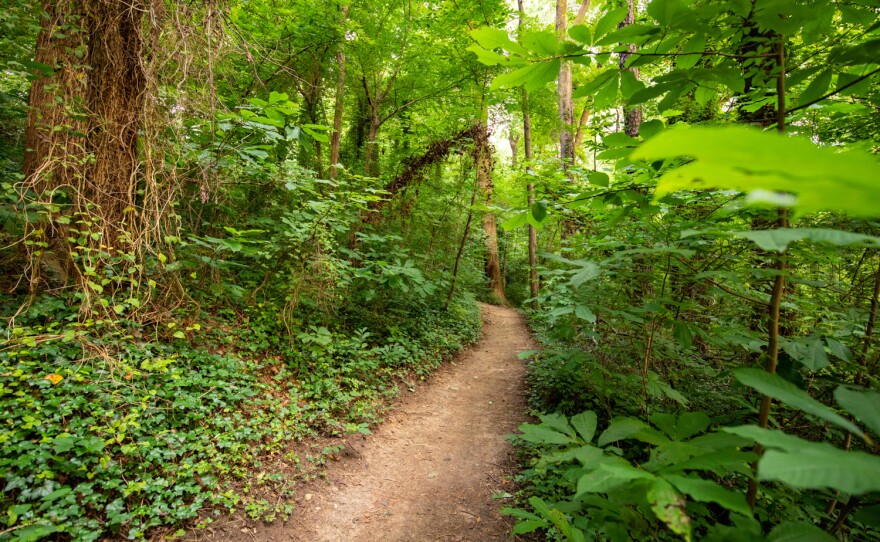Tree canopy preservation and replacement rules that went on the books in Virginia last year got an update from lawmakers this week. The opt-in program allows localities to require developers to plant new or preserve existing trees when they build in certain areas.
It works by setting a minimum coverage requirement - for instance, a locality could designate a developed area as needing at least 10% tree canopy coverage. Because trees take a long time to grow, that requirement is deferred for 20 years after a project’s completion.
The version of the law passed last year only applied to cities and towns either within the Chesapeake Bay Watershed or with a population density of at least 75 people per square mile.
This bill, brought by Sen. Dave Marsden (D-Fairfax) would stretch the option to all localities - but again leaves some proposed programs open-ended and subject to a study.
Why plant more trees?
Environmental groups like the Chesapeake Bay Foundation pushed lawmakers to pass this bill and the previous version.
“Why should trees be limited when trees provide so many ecosystem services and, frankly, cost of living benefits?” asked Peggy Sanner, head of the Bay Foundation in Virginia.
Trees serve as effective protection against both erosion and pollution in state waterways. They trap nutrients like nitrogen that tend to run off of farmland and contribute to deadly algal blooms, and they reduce the amount of silt being stirred up into running water, which has a range of benefits for plants and animals.
In cities, trees can also mitigate increasingly harmful extreme heat simply by providing shade over heat-trapping surfaces. Studies in Richmond show that temperatures in areas with the least greenspace and most asphalt and concrete can greatly exceed those in other parts of the city on hot days.
The lead author on those studies, Jeremy Hoffman, has also connected those hotspots to areas of the city historically occupied by Black people. Those areas were targeted by intentional underinvestment and underdevelopment for decades.
Peace in the valley
Balancing this broad program with local development rules is difficult by nature, so it’s a complicated statute with a lot of interested parties to make happy - developers, environmentalists, foresters, urban planners and more.
Last year’s stakeholder group suggested the addition of caps on what localities can require as a tree canopy minimum - Sanner said she would like to see no limit, but realizes that’s not possible with existing development requirements.
Even with changes like that, a version brought to the House this year was rejected.
So, in order for Sen. Marsden’s version to go through, the Bay Foundation had to make a fair number of compromises with the Home Builders Association of Virginia and other groups to reach what many at the capitol call “peace in the valley.”
For instance, new carve-outs were added for projects where developers can’t feasibly provide the required canopy coverage. And if there’s nowhere locally that needs more trees, the bill directs developers to send the money they would have spent on trees to the Virginia Agricultural Best Management Practices Fund - which the Bay Foundation considers to be the state’s most important water cleanup program. Sanner says the cash would be earmarked for planting forested buffers along streams.
“It keeps the money in the context of putting trees on the ground, but it just was designed to give developers a little more flexibility,” she said.
Del. Keith Hodges (R-Essex) worked with Marsden on adjusting the bill, which now also defers action on tree preservation in favor of another study. Actually keeping existing trees in a development is useful, because trees take a long time to grow and provide their full benefit. But it’s also a uniquely difficult challenge for developers, so stakeholders will meet again to come up with recommendations.
The group will also provide recommendations for rural areas that want to benefit from the program but don’t have the same level of development as Northern Virginia cities, for instance.
It also seeks a solution to the fact that different localities use different calculations to determine tree cover. It asks the Virginia State Forester to create a standard method, which participating localities would be required to use.
The bill received approval from the House of Delegates on Wednesday, though there is some budget language that lawmakers need to iron out this weekend. If all goes well for the sponsors and Gov. Glenn Youngkin signs it into law, the program will expand statewide this summer.



